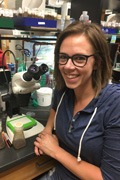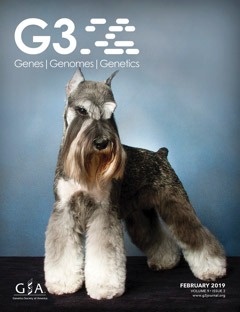Revised College Genetics Laboratory Exercise for Witnessing Phenotypic and Molecular Evolution in the Fruit Fly
Author(s):
Jennifer N. Gredler, Brenda Manzano-Winkler, and Mohamed A.F. Noor
Overview:
This is an update to a published laboratory that allows students to observe both phenotypic and molecular evolution through natural selection in a population of fruit flies (Drosophila simulans). The activity takes advantage of eye color variation and molecular variation in a live model organism to demonstrate concepts of transmission genetics and evolutionary genetics. To make this exercise more accessible to a broader audience of novice fly handlers, the authors constructed strains of Drosophila melanogaster that eliminate the difficult, time-consuming steps of collecting virgin females to be used in crosses, and designed new markers to be used with this species. This revision describes the changes to the activity, how the strains were constructed, and results from a test-run of the revised activity.
This activity utilizes the protocol and concepts originally published in Evolution: Education and Outreach in 2012 by Caiti Heil, Mika Hunter, Julient Noor, Kathleen Miglia, Brenda Manzano-Winkler, Shannon McDermott, and Mohamed Noor; any of the original materials are included here with permission, and can also be accessed at the Noor Lab website.
Genetics Concept(s) Addressed:
Transmission/patterns of Inheritance: What are the mechanisms by which an organism’s genome is passed on to the next generation?
Transmission/patterns of inheritance: How does the phenomenon of linkage affect the assortment of alleles during meiosis?
Transmission/patterns of inheritance: How can one deduce information about genes, alleles, and gene functions from analysis of genetic crosses and patterns of inheritance?
Evolution and Population Genetics: What are the processes that can affect the frequency of genotypes and phenotypes in a population over time?
Core Competencies Addressed:
Students should be able to implement observational strategies to devise a question.
Students should be able to generate testable hypotheses.
Students should be able to design an experiment using appropriate controls and appropriate sample sizes.
Students should be able to gather and evaluate experimental evidence, including qualitative and quantitative data.
Audience:
Intermediate, undergraduate biology/genetics major
Activity Type:
Open-ended laboratory exercise
Activity Length:
4-6 activity days spread across 2-3 months
Citation:
Heil, C. S. S., M. J. Hunter, J. K. F. Noor, K. Miglia, B. Manzano-Winkler, S. R. McDermott, and M. A. F. Noor. (2012) Witnessing phenotypic and molecular evolution in the fruit fly. Evolution: Education and Outreach, 5: 629-634. DOI: 10.1007/s12052-012-0447-5
Original Resource– Paper in Evolution: Education and Outreach
Resource Justification (PDF, Word)
Summarized Teacher Instructions (PDF, Word)
Detailed Teacher Instructions (PDF, Word)



